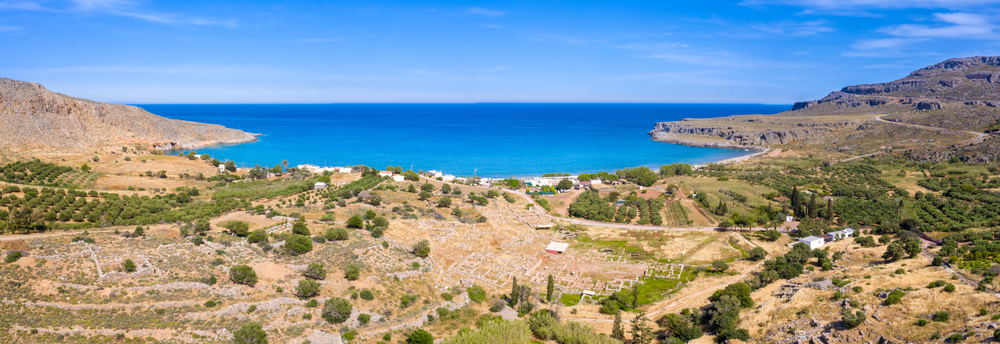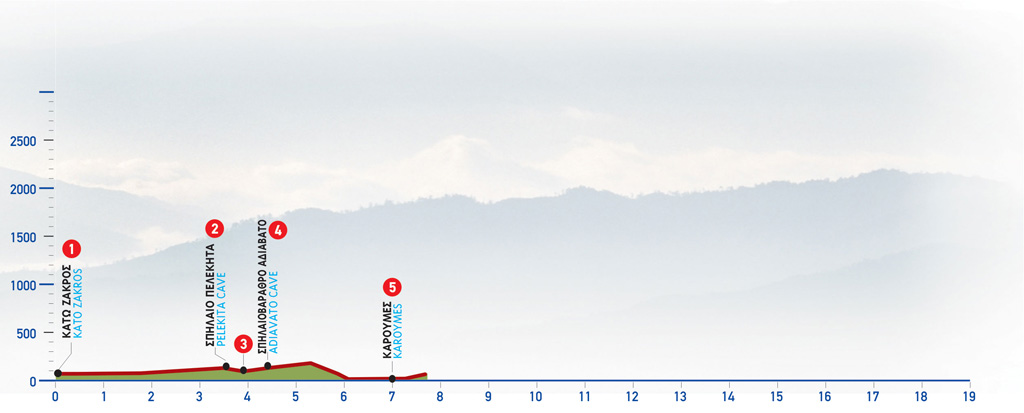
90 Kato Zakros – Karoumes

The Kato Zakros to Karoumes route is probably one of the most remote and inaccessible parts of the E4 trail. It hugs the eastern coast of the island and has brought to light archaeologically significant findings from the Minoan period. Unobstructed views of the open sea on the east frame the scenery. This route offers little natural shade during the summer months so extra water and sunscreen are needed.
We start from the beach north of the coastal settlement of Kato Zakros (1) with its charming tavernas and crystal clear waters. We follow the path that leads to a rocky plateau, after which we cross a stream. Then, we continue parallel to the coast, in a relatively clear path, which climbs up towards the entrance of the Pelekita cave (2), with a characteristic fig tree at the entrance. The fig tree has also given the cave its alternative name “Sikia Cave“. This is one of the largest caves in Crete, with impressive stalactite and stalagmite formations. Traces of prehistoric human activity from the Neolithic Age have also been found here. Navigating the full length of the cave (more than 3km) can be tricky for novice hikers and should not be attempted without proper equipment. Some of the formations can still be observed from the entrance.
From the cave, the path which becomes hard to discern, descends for about 500 m, to the ancient quarry (3). The quarry supplied the ancient Minoans with the material needed to construct the Palace of Zakros, originally built in 1900 BC. From the quarry onward, the indistinct path continues along the coast at a higher level, passes by the mouth of the Adiavato cave and then climbs up to the top of a steep slope (4).
From this point, we follow the same contour for about 600 m. The entire bay of Karoumes (5), with the beach at the end of the gorge of Chochlakies, lies before us, to the north. We arrive there after passing by a smaller beach and bypassing the rocky southern slope of the main beach.
The secluded bay of Karoumes beach rewards hikers with soft pebbles and tranquil waters. A swim here is recommended before carrying on to hike the Karoumes – Hohlakies route that takes you back to the village. The name “Karoumes” comes from the Arab word for carob – “karub”.
If time allows and you want an entirely secluded beach stop, there are more secret bays nearby.
| Path Length | 5.5 km |
|---|---|
| Hiking Duration | 2 hour |
| When to hike | Spring, Autumn, Summer, Winter |
| Path Region | Lassithi |